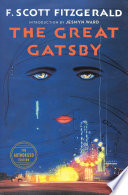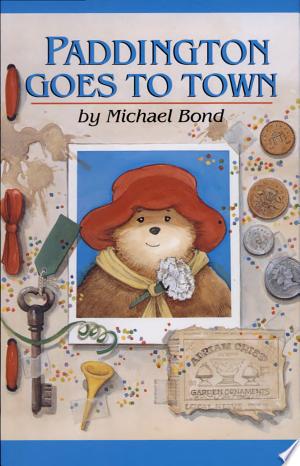Estimated read time: 8 min read
One Sentence Summary
"The Great Gatsby" follows Jay Gatsby's pursuit of the American Dream, as he yearns for his lost love, Daisy Buchanan, in the lavish and tumultuous world of 1920s Long Island.
Table of Contents
Introduction
"The Great Gatsby" by F. Scott Fitzgerald is a classic American novel that delves into the lives of the wealthy elite in the 1920s. This timeless tale explores themes of love, wealth, and the American Dream, all set against the backdrop of the vibrant jazz age. The story is narrated by Nick Carraway, who becomes entangled in the lives of his enigmatic neighbor, Jay Gatsby, and his obsession with the beautiful Daisy Buchanan. As the narrative unfolds, readers are drawn into a world of extravagance, longing, and the harsh realities that accompany the pursuit of the elusive American Dream.
Brief Synopsis
Plot Overview
"The Great Gatsby" is set in the summer of 1922 and is primarily based in the fictional town of West Egg on Long Island, New York. The novel follows the life of Nick Carraway, a young man from a well-to-do family who rents a modest house next to the grand mansion of Jay Gatsby, a mysterious and wealthy man known for hosting lavish parties.
Nick becomes drawn into the opulent world of his neighbor and reconnects with his cousin Daisy Buchanan, who lives across the bay in the more fashionable East Egg. Daisy is married to the wealthy but unfaithful Tom Buchanan, and Nick soon discovers that Gatsby is deeply in love with her.
As the story unfolds, relationships become entangled, secrets are revealed, and the characters' lives collide in a tragic and fateful manner.
Setting
The novel is set in the affluent enclaves of Long Island, New York, during the Roaring Twenties. The opulent mansions, extravagant parties, and the overall aura of excess and frivolity serve as a backdrop to the characters' lives and the unfolding drama. The stark contrast between the new money of West Egg and the old money of East Egg reflects the broader societal themes of the novel.
Main Characters
The Great Gatsby features a cast of compelling and complex characters, each with their own desires, flaws, and motivations.
| Character | Description |
|---|---|
| Jay Gatsby | A mysterious and wealthy man known for his extravagant parties and his unrelenting love for Daisy Buchanan. Gatsby is enigmatic and ambitious, and his past is shrouded in mystery. |
| Daisy Buchanan | A beautiful and alluring woman who is married to Tom Buchanan. Daisy is the object of Gatsby's affection and is torn between her feelings for him and the comforts of her privileged life. |
| Nick Carraway | The novel's narrator, and a young man from a well-to-do family who becomes embroiled in the lives of those around him. Nick is both fascinated and repelled by the extravagance and moral decay he witnesses. |
| Tom Buchanan | Daisy's wealthy and arrogant husband, Tom is having an affair with Myrtle Wilson. He represents the old money aristocracy and embodies the shallowness and moral corruption of the era. |
| Jordan Baker | A professional golfer and Daisy's close friend. Jordan is cynical, self-sufficient, and often serves as a voice of reason amidst the chaos and excess of the other characters. |
| Myrtle Wilson | Tom Buchanan's mistress, Myrtle is married to George Wilson, a mechanic in the Valley of Ashes. She yearns for wealth and status, and her affair with Tom proves to have devastating consequences. |
Chapter Summaries
Chapter 1-3
The novel opens with Nick Carraway, the narrator, introducing himself and his move to West Egg, where he rents a house next to the grand mansion of Jay Gatsby. He describes the extravagant parties Gatsby hosts, and the rumors that swirl around his mysterious past. Nick visits his cousin Daisy and her husband Tom Buchanan in East Egg, and it becomes evident that their marriage is strained. Tom is having an affair with Myrtle Wilson, the wife of a mechanic in the Valley of Ashes.
Chapter 4-6
Gatsby invites Nick to one of his parties, and the two become acquainted. Gatsby and Nick attend lunch at Tom and Daisy's, where tensions rise, and Gatsby's infatuation with Daisy becomes apparent. Gatsby and Daisy rekindle their romance, and Gatsby's past is slowly revealed. The novel delves into Gatsby's origins and his rise to wealth, shedding light on his motivations and desires.
Chapter 7-9
The tensions between the characters reach a boiling point in this section. Tom becomes increasingly suspicious of Gatsby and Daisy's relationship, leading to a confrontation. Tragic events unfold, leading to a devastating climax that alters the lives of the characters irrevocably and highlights the consequences of their actions.
Main Events
Throughout the novel, several pivotal events drive the narrative and shape the characters' fates.
| Event | Description |
|---|---|
| Gatsby's Parties | Gatsby's extravagant parties serve as a backdrop for the opulence and excess of the era, while also highlighting the emptiness and longing that permeate the lives of the characters. |
| Daisy and Gatsby's Reunion | The reunion of Daisy and Gatsby reignites their romance and sets off a chain of events that will ultimately lead to tragedy. |
| Tom's Discovery | Tom becomes increasingly suspicious of Daisy and Gatsby's relationship, leading to a confrontation that exposes the truth. |
| Tragic Conclusion | The novel builds to a tragic and fateful conclusion, where the characters' actions culminate in devastating consequences. |
Themes and Insights
Themes
"The Great Gatsby" explores a myriad of themes that are as relevant today as they were in the 1920s.
| Theme | Description |
|---|---|
| The American Dream | The novel delves into the illusion of the American Dream, as characters grapple with the pursuit of wealth, success, and the emptiness that often accompanies it. |
| Love and Desire | The themes of love and desire are central to the novel, as characters navigate their relationships and longings amidst the societal expectations and constraints of the era. |
| Wealth and Class | The stark divide between old money and new money, as well as the blinding allure of wealth, are prevalent themes that shape the characters' lives and decisions. |
| Moral Decay | The novel paints a portrait of moral decay and disillusionment, as the characters navigate a world fraught with deceit, infidelity, and the hollow pursuit of pleasure. |
Insights
Fitzgerald's masterful storytelling offers profound insights into the human condition and the complexities of human nature.
- The novel serves as a cautionary tale about the hollowness of materialism and the fleeting nature of superficial pursuits.
- It invites readers to contemplate the consequences of unbridled ambition, unrequited love, and the destructive power of obsession.
- Fitzgerald's keen observations on the societal constructs of wealth, class, and privilege offer a scathing critique of the era's moral bankruptcy and the elusive allure of the American Dream.
Reader's Takeaway
"The Great Gatsby" captivates readers with its timeless exploration of love, longing, and the human yearning for meaning and fulfillment. The novel's vivid portrayal of the Jazz Age, coupled with its rich character development, invites readers to reflect on the enduring themes of the pursuit of happiness, the complexities of human relationships, and the perils of unchecked ambition. As readers immerse themselves in the lives of the characters, they are compelled to ponder the enduring relevance of the novel's themes and the haunting truths it reveals about the human experience.
Conclusion
In "The Great Gatsby," F. Scott Fitzgerald delivers a compelling narrative that transcends time, offering readers a poignant examination of love, wealth, and the relentless pursuit of the American Dream. Through vivid prose and multifaceted characters, the novel captures the essence of an era marked by extravagance and moral decay, while also delving into the universal themes of human desire, disillusionment, and the inexorable search for meaning. As readers navigate the tumultuous lives of Jay Gatsby, Daisy Buchanan, and Nick Carraway, they are confronted with the enduring resonance of Fitzgerald's storytelling, which continues to resonate with audiences, offering a timeless reflection on the human condition.
The Great Gatsby FAQ
What is the setting of The Great Gatsby?
The Great Gatsby is set in the 1920s on Long Island and in New York City.
Who is the author of The Great Gatsby?
The Great Gatsby was written by F. Scott Fitzgerald.
What is the main theme of The Great Gatsby?
The main themes of The Great Gatsby include the American Dream, wealth, love, and the excesses of the Jazz Age.
Who is the narrator of The Great Gatsby?
The narrator of The Great Gatsby is Nick Carraway.
What is the significance of the green light in The Great Gatsby?
The green light represents Gatsby's hopes and dreams, particularly his longing for Daisy Buchanan.





